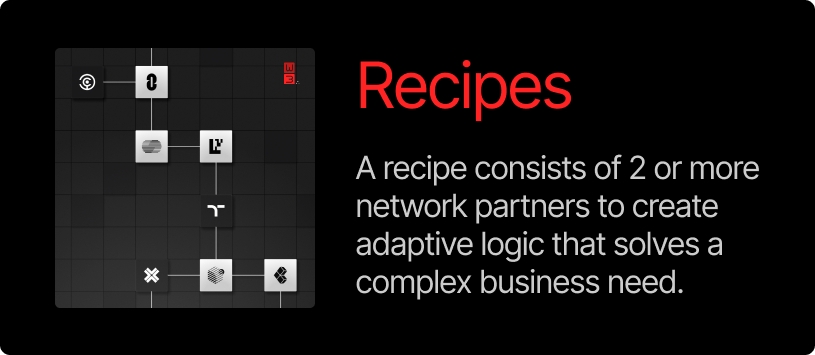Recipes
Recipes are structured workflows composed of multiple ingredients orchestrated into verifiable, executable business processes. They represent the computational backbone of the W3.io ecosystem, transforming disparate blockchain and off-chain services into cohesive solutions that address real-world challenges.

Anatomy of a Recipe
Each recipe is comprised of several key components:
Trigger: Every recipe begins with a trigger—a specific event that initiates the workflow. This could be a blockchain transaction, a time-based event, an external API call, or any other defined condition. Triggers are the entry points that determine when and how a recipe executes.
Variable Pool: A dynamic data storage mechanism that enables ingredients to share and modify information throughout the recipe's execution. This maintains state across the workflow and ensures data consistency.
Workflow Steps: A carefully sequenced series of operations where each ingredient processes data and passes results to subsequent steps. The sequence can include conditional logic, loops, and parallel processing paths.
Failure Handling: Built-in mechanisms to manage errors or exceptions that may occur during execution, including logging errors, retrying steps, or executing alternative workflows.
How Recipes Work
When a trigger event occurs, the W3.io Knights network activates the corresponding recipe. Knights coordinate to execute each step in the workflow, interfacing with the appropriate ingredients as defined in the recipe. Throughout execution, all operations are cryptographically logged and verified to ensure integrity and traceability.
Recipes can range from simple two-step processes to complex workflows with dozens of operations across multiple chains and services. The adaptive logic within recipes can respond to changing conditions, making them suitable for a wide range of business applications.
Creating Recipes
Recipes can be created through:
Visual Interface: Our intuitive drag-and-drop interface allows business users to design workflows without writing code.
Command Line Interface (CLI): Power users can script and automate recipe creation through our CLI.
API: Programmatic creation and management of recipes for integration with existing systems.
All recipes are stored in a standardized format that ensures portability and version control, making it easy to iterate and improve them over time.
Verification and Trust
One of the core principles of W3.io recipes is verifiability. Each step in a recipe generates cryptographic proofs that the operation was executed correctly. These proofs are aggregated into a Merkle tree and can be anchored to any blockchain, creating an immutable record of execution.
This verification system ensures that even when working with multiple off-chain providers, the entire process maintains the trust and transparency that blockchain technology promises.
Benefits of Recipes
Reusability: Once created, recipes can be reused across multiple business processes.
Composability: Recipes can be combined or nested within larger workflows.
Adaptability: Easily modified to accommodate changing business requirements.
Transparency: Complete visibility into every step of execution.
Efficiency: Automated orchestration reduces manual intervention and potential errors.
Recipes are the connective tissue that binds together the diverse capabilities of our ingredient partners, transforming individual services into powerful, integrated solutions that bridge the gap between blockchain's promise and practical business applications.
Recipe Architecture
Recipes are structured workflows composed of multiple ingredients, defining complete business processes triggered by specific events.
Each recipe includes:
Trigger: Initiates execution based on events
Variable Pool: Provides dynamic data storage for ingredient communication
Workflow Steps: Ordered sequence where each ingredient processes data
Failure Handling: Mechanisms for error management and alternative workflows
Example: Multi-Party Asset Rebalancing
Trigger: Market condition change detected ├── Step 1: Identity verification (Privado ID) ├── Step 2: Compliance verification (Cube3) ├── Step 3: Portfolio analysis (Space & Time) ├── Step 4: Trade order generation (Yelay) └── Step 5: Cross-chain execution (LayerZero) Result: Verifiable on-chain record of entire workflow
Developer Experience
Current State: Command-line interface and YAML for recipe creation and deployment
Future Roadmap: Enhanced developer tooling planned:
Recipe Creation: Target < 1 day using planned visual interface
Ingredient Integration: Pre-built integrations to reduce/eliminate custom development
Testing & Deployment: Planned sandbox environment with real partner integrations
Monitoring: Real-time dashboards for workflow execution and performance
Last updated